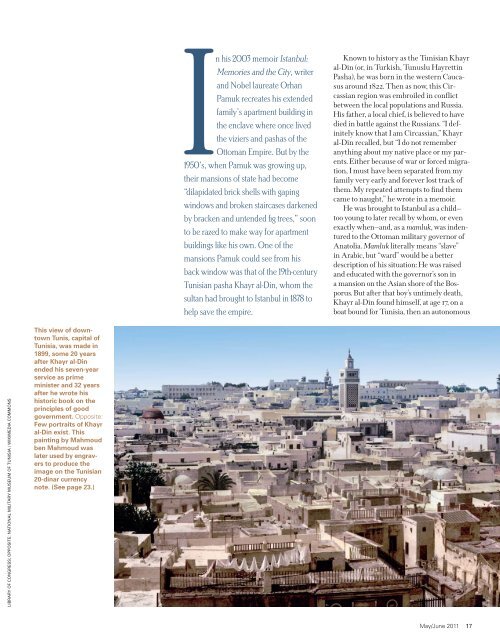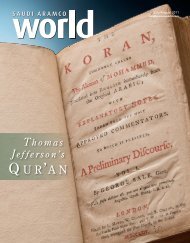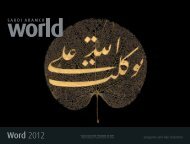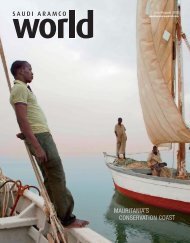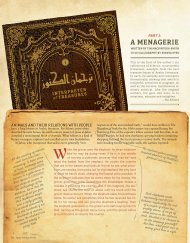MIDEAST - Saudi Aramco World
MIDEAST - Saudi Aramco World
MIDEAST - Saudi Aramco World
Create successful ePaper yourself
Turn your PDF publications into a flip-book with our unique Google optimized e-Paper software.
n his 2003 memoir Istanbul:<br />
Memories and the City, writer<br />
and Nobel laureate Orhan<br />
Pamuk recreates his extended<br />
family’s apartment building in<br />
the enclave where once lived<br />
the viziers and pashas of the<br />
Ottoman Empire. But by the<br />
1950’s, when Pamuk was growing up,<br />
their mansions of state had become<br />
“dilapidated brick shells with gaping<br />
windows and broken staircases darkened<br />
by bracken and untended fig trees,” soon<br />
to be razed to make way for apartment<br />
buildings like his own. One of the<br />
mansions Pamuk could see from his<br />
back window was that of the 19th-century<br />
Tunisian pasha Khayr al-Din, whom the<br />
sultan had brought to Istanbul in 1878 to<br />
help save the empire.<br />
Known to history as the Tunisian Khayr<br />
al-Din (or, in Turkish, Tunuslu Hayrettin<br />
Pasha), he was born in the western Caucasus<br />
around 1822. Then as now, this Circassian<br />
region was embroiled in conflict<br />
between the local populations and Russia.<br />
His father, a local chief, is believed to have<br />
died in battle against the Russians. “I definitely<br />
know that I am Circassian,” Khayr<br />
al-Din recalled, but “I do not remember<br />
anything about my native place or my parents.<br />
Either because of war or forced migration,<br />
I must have been separated from my<br />
family very early and forever lost track of<br />
them. My repeated attempts to find them<br />
came to naught,” he wrote in a memoir.<br />
He was brought to Istanbul as a child—<br />
too young to later recall by whom, or even<br />
exactly when—and, as a mamluk, was indentured<br />
to the Ottoman military governor of<br />
Anatolia. Mamluk literally means “slave”<br />
in Arabic, but “ward” would be a better<br />
description of his situation: He was raised<br />
and educated with the governor’s son in<br />
a mansion on the Asian shore of the Bosporus.<br />
But after that boy’s untimely death,<br />
Khayr al-Din found himself, at age 17, on a<br />
boat bound for Tunisia, then an autonomous<br />
LIBRARY OF CONGRESS; OPPOSITE: NATIONAL MILITARY MUSEUM OF TUNISIA / WIKIMEDIA COMMONS<br />
This view of downtown<br />
Tunis, capital of<br />
Tunisia, was made in<br />
1899, some 20 years<br />
after Khayr al-Din<br />
ended his seven-year<br />
service as prime<br />
minister and 32 years<br />
after he wrote his<br />
historic book on the<br />
principles of good<br />
government. Opposite:<br />
Few portraits of Khayr<br />
al-Din exist. This<br />
painting by Mahmoud<br />
ben Mahmoud was<br />
later used by engravers<br />
to produce the<br />
image on the Tunisian<br />
20-dinar currency<br />
note. (See page 23.)<br />
May/June 2011 17


